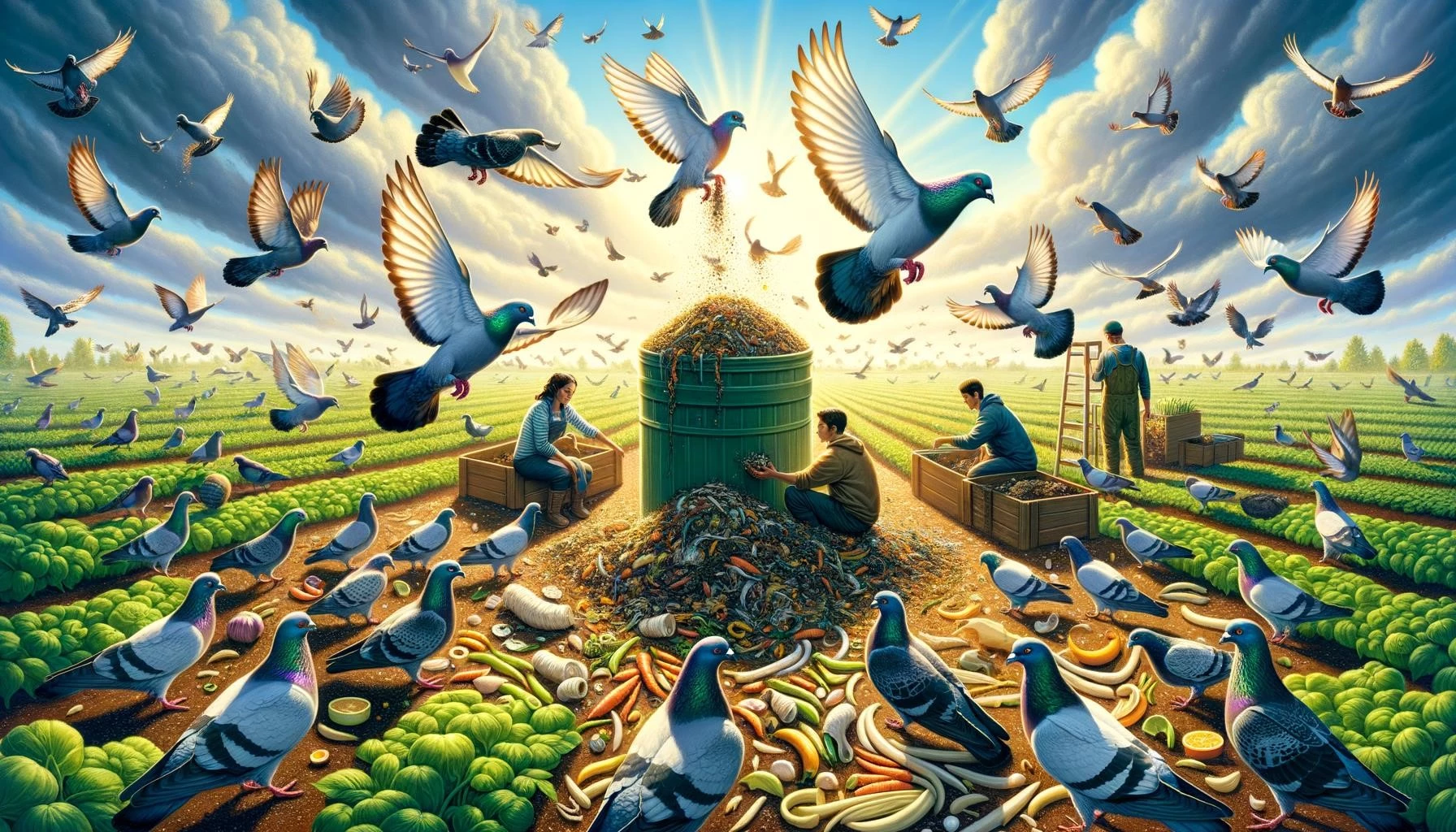Pigeons are a common sight in urban environments, perching on buildings and tiptoeing through city streets. While often regarded as a nuisance or even pests, pigeons have an interesting role to play in the discussion of sustainable land use. This article will explore the relationship between pigeons and sustainable land use, examining their adaptability to urban habitats and their impact on ecosystems. We will also discuss the potential benefits and challenges of incorporating pigeons into sustainable land management practices.
Key Takeaways
- Pigeons are adaptable birds that can thrive in urban environments.
- They contribute to ecosystem dynamics as primary consumers and provide a food source for birds of prey.
- Pigeons can be seen as an indicator of urban sustainability and the potential benefits of incorporating wildlife into urban landscapes.
- However, pigeons can also cause issues such as property damage and health concerns.
- Creating a symbiotic relationship with pigeons through sustainable land management practices can help mitigate negative impacts and promote a more harmonious coexistence.
Pigeons in Urban Environments
Pigeons, or rock doves, have a long history of coexisting with humans, dating back to ancient times. They have adapted well to urban environments, taking advantage of the abundance of food and shelter provided by human activity. Pigeons choose nesting sites in sheltered nooks and crannies on buildings, cliffs, or trees and construct simple nests from interwoven twigs, grass, feathers, and other debris.
Their adaptability to urban environments is due to several factors. Firstly, pigeons have a diverse diet that includes grains, seeds, fruits, and even human leftovers. They can easily find food in urban areas, whether it’s from discarded crumbs on the streets or bird feeders put out by humans. Secondly, pigeons have a high reproductive rate, with females laying 1-2 eggs multiple times a year. This allows their population to rapidly replenish itself, even in heavily urbanized areas.
Pigeons’ ability to thrive in urban environments makes them an interesting subject for sustainable land use discussions. Their presence can indicate the potential for nature to coexist with developed areas, and their adaptability can shed light on ways to create more sustainable urban landscapes.
Pigeons and Ecosystem Dynamics
While often disregarded as common city dwellers, pigeons play a role in ecosystem dynamics, especially in urban environments. They act as primary consumers, feeding on grains, seeds, and fruits, and are an integral part of the urban food chain. Their abundance and accessibility make them an important food source for birds of prey, such as hawks and falcons, which helps maintain a balance in the urban bird population.
Pigeons’ contribution to the food web highlights the importance of recognizing and preserving biodiversity in urban landscapes. By promoting sustainable land use practices that create habitats for a variety of species, including pigeons, we can support a more resilient and diverse urban ecosystem.
Sustainable Land Management and Pigeon Coexistence
When considering sustainable land management, it is essential to find ways to ensure the coexistence of pigeons and other wildlife with human activities. This requires a balance between fostering biodiversity and addressing potential issues associated with pigeons, such as property damage and health concerns.
One approach is to implement sustainable urban design that incorporates green spaces and natural habitats within the built environment. This can provide nesting sites and food sources for pigeons and other urban wildlife while creating a more aesthetically pleasing urban landscape. Additionally, implementing regulations or guidelines for responsible pigeon feeding can help manage their population and prevent overreliance on human food sources.
Education and public awareness are also key components of sustainable land management practices. By educating the public about the benefits of biodiversity and the importance of coexisting with wildlife, people can become more conscious of their actions and contribute to a harmonious relationship with pigeons and other urban wildlife.
In conclusion, pigeons are adaptable birds that have found a home in urban environments. Their presence can serve as a reminder of the potential for sustainable land use, where wildlife and human activities can coexist. Incorporating pigeons into sustainable land management practices can promote biodiversity, support ecosystem dynamics, and enhance the quality of urban life.









